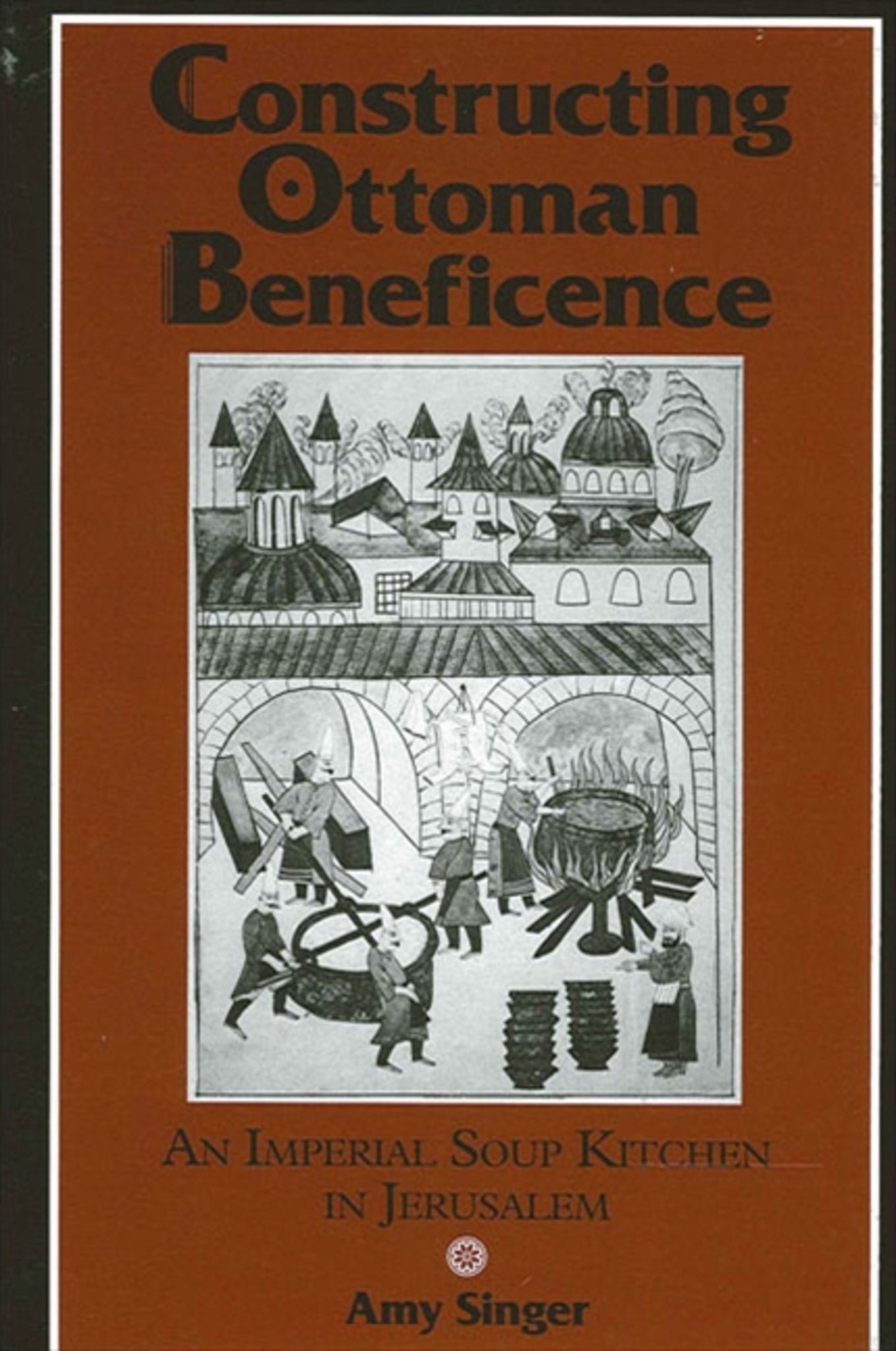We're sorry. An error has occurred
Please cancel or retry.
Constructing Ottoman Beneficence

Some error occured while loading the Quick View. Please close the Quick View and try reloading the page.
Couldn't load pickup availability
- Format:
-
09 May 2002

Presents the political, social, and cultural context behind Ottoman charity.
Ottoman charitable endowments (waqf) constituted an enduring monument to imperial beneficence and were important instruments of policy. One type of endowment, the public soup kitchen (imaret) served travelers, scholars, pious mystics, and local indigents alike. Constructing Ottoman Beneficence examines the political, social, and cultural context for founding these public kitchens. It challenges long-held notions about the nature of endowments and explores for the first time how Ottoman modes of beneficence provide an important paradigm for understanding universal questions about the nature of charitable giving.
A typical and well-documented example was the imaret of Hasseki Hurrem Sultan, wife of Sultan Süleyman I, in Jerusalem. The imaret operated at the confluence of imperial endowment practices and Ottoman food supply policies, while also exemplifying the role of imperial women as benefactors. Through its operations, the imaret linked imperial Ottoman and local Palestinian interests, integrating urban and rural economies.


"…Singer's study … will be a major landmark in this field, and in the social history of the Ottoman Empire at large. Its clear and concise style will help to make it a standard assignment for undergraduate and graduate courses … In its attempt to bring together the historiography of social and political life in the Ottoman Empire … [this book] breaks important new ground." — H-Net Reviews (H-Turk)
"Constructing Ottoman Beneficence is an admirable example of what a monograph can be. Singer has read a rich body of archival sources deeply, producing an excellent analysis of the Hasseki Sultan waqf and imaret." — International Journal of Middle East Studies
"…the book contributes to our understanding of Ottoman philanthropic policy … and of the role of highly placed women in this policy … it provides insight into life in Jerusalem in the mid-sixteenth century." — Journal of Palestine Studies
"A tightly argued look at a remarkably rich set of records about a royal patronage institution in the grand imperial age of the Ottomans." — Virginia Aksan, McMaster University
"This book will be useful because of its readability, clarity, and the way it unites the different strands of political, religious, social, and economic history." — Linda T. Darling, University of Arizona
List of Maps and Illustrations
Acknowledgments
Abbreviations
Note on Ottoman Turkish and Arabic Transliterations
Introduction
1. "Devote the fruits to pious purposes"
What is a waqf?
The roots of waqf
Why found a waqf?
The Ottomans
2. A Bowl of Soup and a Loaf of Bread
The written record
Institutions of the endowment
Endowed properties
Personnel
Soup
Why Jerusalem?
3. Ladies Bountiful
The conflated traditions: Hurrem-Helena
Beneficence and women in Islamic history
Early examples
The Byzantine factor
Turco-Mongol heritage
The Ottomans
The Gender of Beneficence
4. Serving Soup in Jerusalem
A report from the 'imaret
On management
Getting started
Tax arrears and firewood
Food for all
Building a bath
Dealing in grain
Adding to the endowment
5. Feeding Power
Provisioning
Istanbul and Topkapı Palace
Provincial towns
The army on campaign
Janissaries
Hajj caravans
On the word 'imaret
Pre-Ottoman precedents
An Ottoman institution
Conclusion: Practicing Beneficence
Notes
Bibliography
Index



